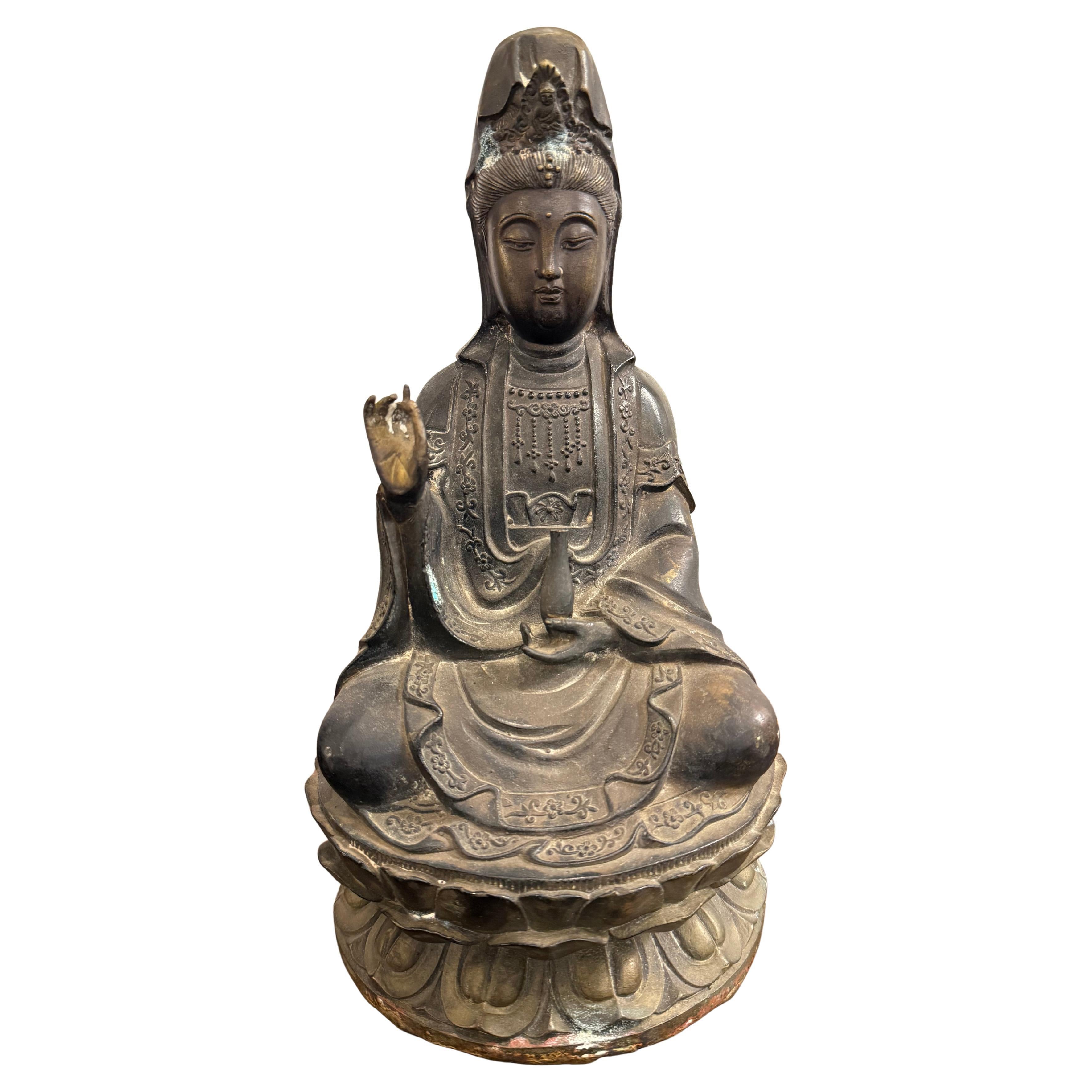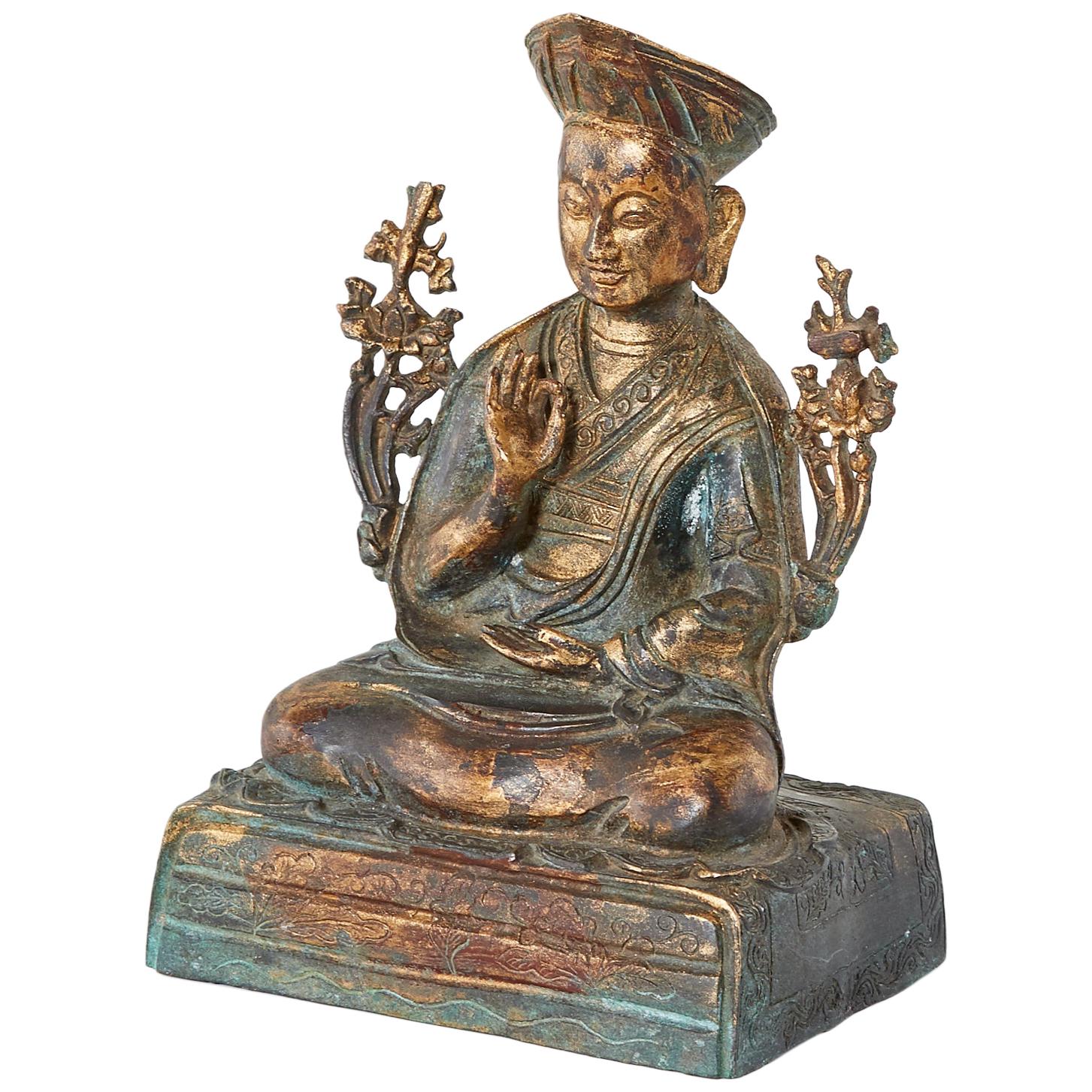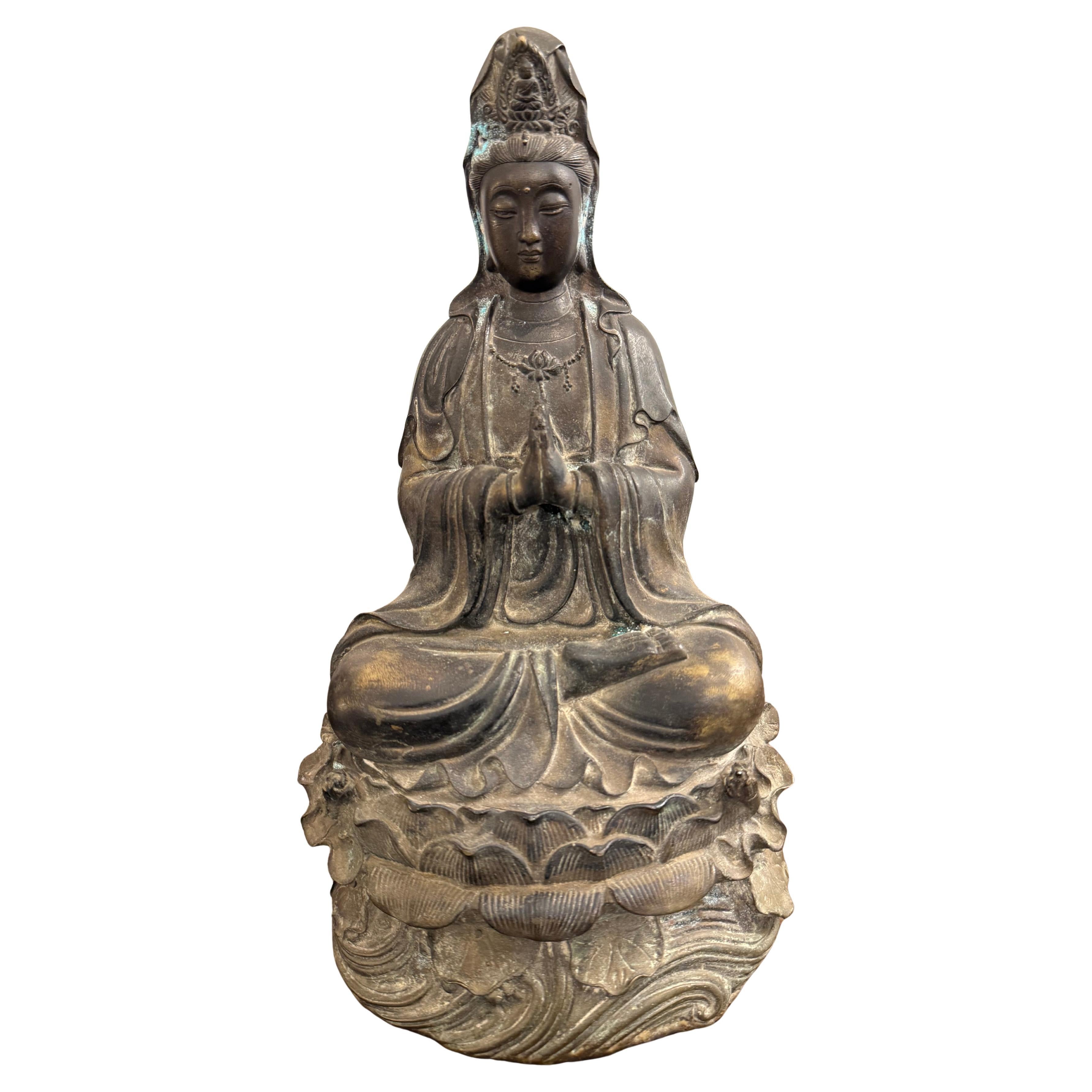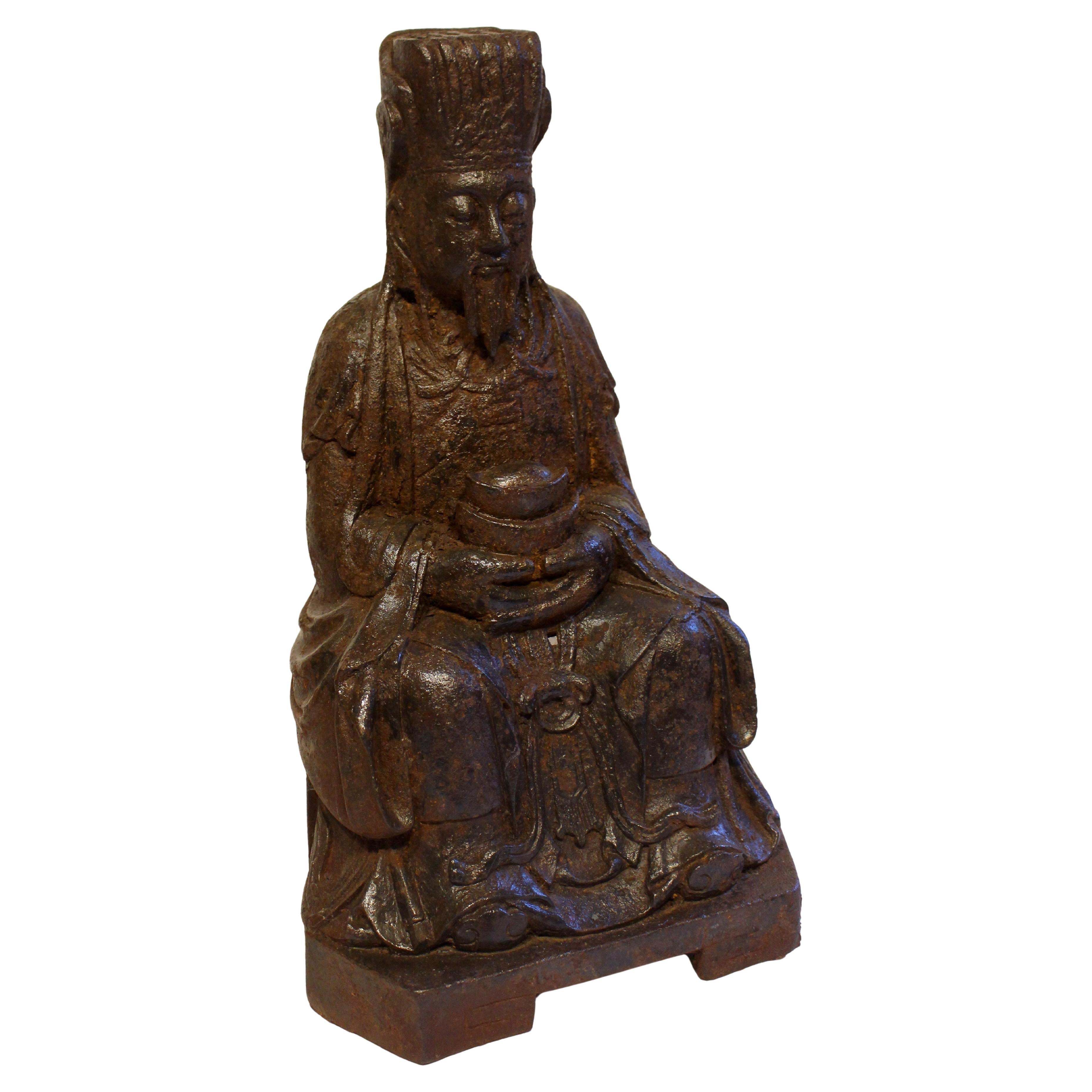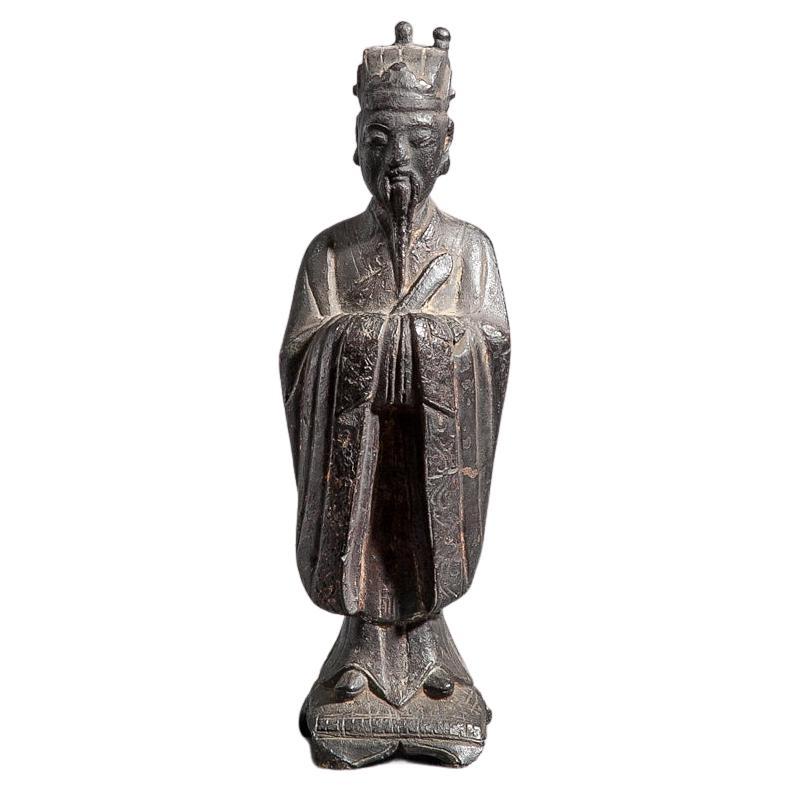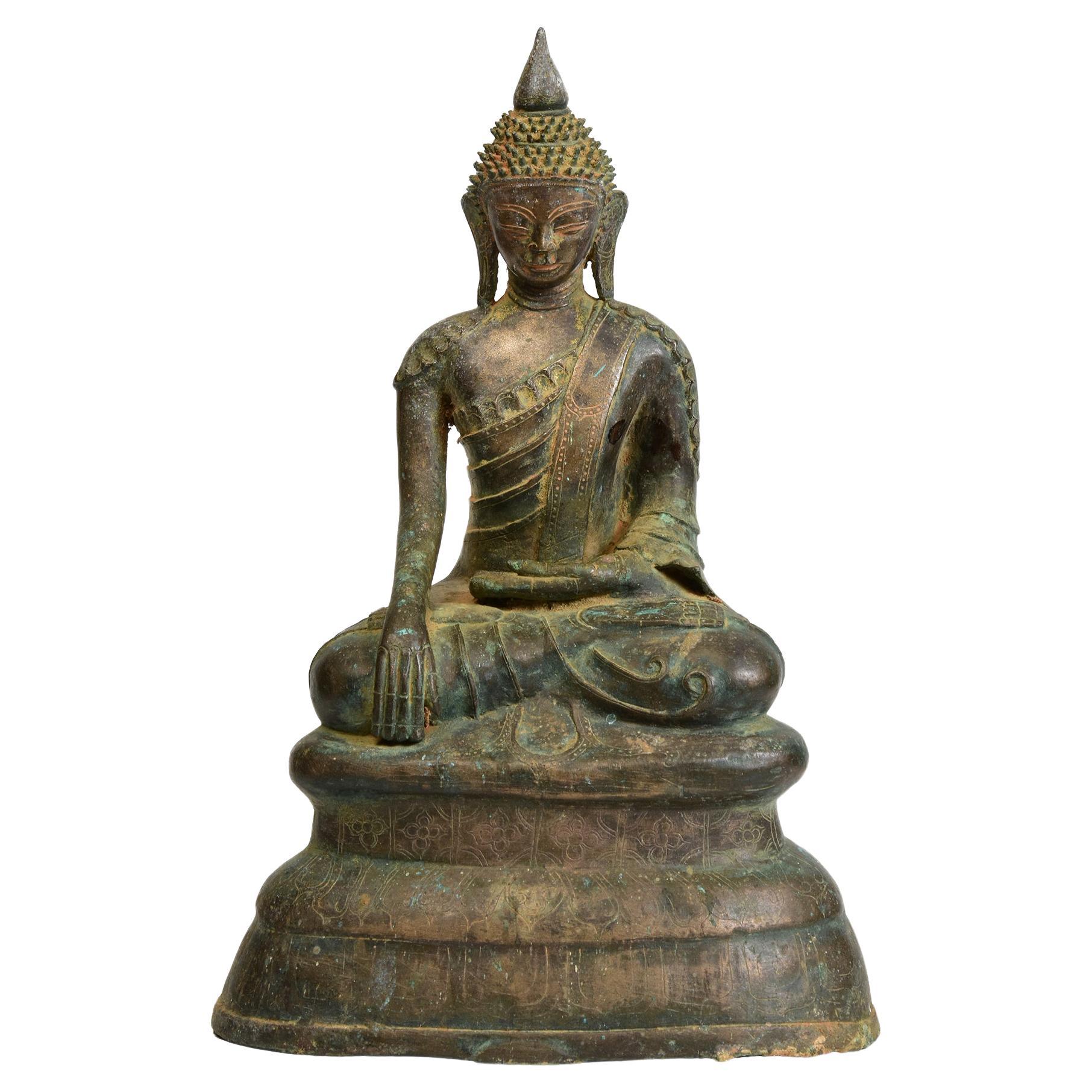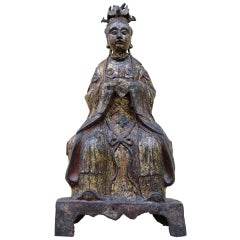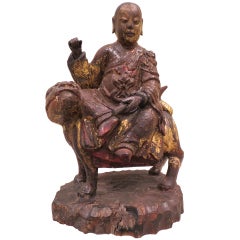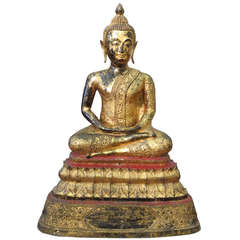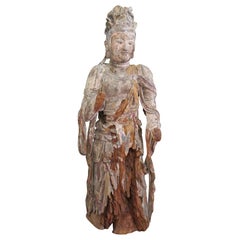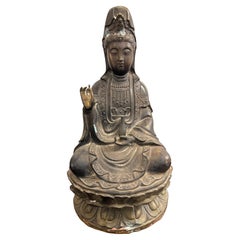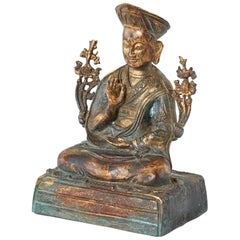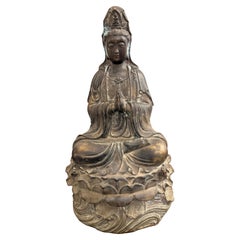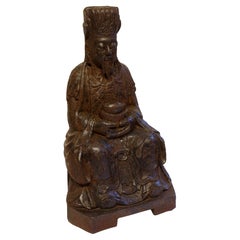Items Similar to Bronze Figure of a Seated Luohan, Ming Dynasty, 1368-1644
Want more images or videos?
Request additional images or videos from the seller
1 of 9
Bronze Figure of a Seated Luohan, Ming Dynasty, 1368-1644
$7,183.35
£5,330.08
€6,000
CA$10,032.63
A$10,880.62
CHF 5,714.92
MX$132,164.33
NOK 71,513.14
SEK 67,333.61
DKK 45,690.03
About the Item
Cast seated wearing a simple robe with his right hand resting on the hilt of a snake-entwined sword, the left hand held aloft, his face with meditative expression.
About the Seller
No Reviews Yet
Vetted Professional Seller
Every seller passes strict standards for authenticity and reliability
1stDibs seller since 2014
27 sales on 1stDibs
- ShippingRetrieving quote...Shipping from: Torino, Italy
- Return Policy
Authenticity Guarantee
In the unlikely event there’s an issue with an item’s authenticity, contact us within 1 year for a full refund. DetailsMoney-Back Guarantee
If your item is not as described, is damaged in transit, or does not arrive, contact us within 7 days for a full refund. Details24-Hour Cancellation
You have a 24-hour grace period in which to reconsider your purchase, with no questions asked.Vetted Professional Sellers
Our world-class sellers must adhere to strict standards for service and quality, maintaining the integrity of our listings.Price-Match Guarantee
If you find that a seller listed the same item for a lower price elsewhere, we’ll match it.Trusted Global Delivery
Our best-in-class carrier network provides specialized shipping options worldwide, including custom delivery.More From This Seller
View AllGilt Bronze Figure of Xi-Wang-Mu, Qing Dynasty, Qianlong Kingdom
Located in Torino, IT
The queen mother of the west is cast in a seated position with her hands held before her chest holding a "gui". She is dressed in long-sleeved robes. Her face is framed by an elabora...
Category
Antique 1790s Chinese Qing Sculptures and Carvings
Materials
Bronze
Ancient Chinese Hand-Carved Lohan Monk Buddha On Lion, Kangxi, 1661-1722
Located in Torino, IT
A Fine hand-carved and Lacquered wood figure of a Luohan Arhat, Buddha' disciple.
Seated in royal ease on a standing lion, wearing long flowing robes.
China, Kangxi Kingdom 1661-17...
Category
Antique 18th Century Chinese Qing Sculptures
Materials
Giltwood, Lacquer
Antique Late 19th Century Gilded Thai Buddha Bronze Statue
Located in Torino, IT
Antique late 19th century Thai Buddha bronze statue, with a lacquered and gilded surface, heavy and with beautiful details.
Category
Antique Late 19th Century Thai Sculptures
Standing Carved Wood Bodhisattva Avalokiteśvara, Guanyin, China, 1368-1644
Located in Torino, IT
Early Ming standing carved wood Bodhisattva Avalokiteśvara (Guanyin), China 1368-1644. This massive Bodhisattva Guanyin is depicted here in the...
Category
Antique 15th Century and Earlier Chinese Ming Sculptures
Materials
Wood
Large Chinese Mid-19th Century Sand Stone Sculpture of a Scholar
Located in Torino, IT
Large Chinese mid-19th century sand stone sculpture of a scholar.
Category
Antique 19th Century Chinese Sculptures
Late 19th Century Burmese Red Lacquer Offering Vessel "Hsunok"
Located in Torino, IT
Late 19th century Burmese
red lacquer special
ceremonial offering vessel.
Detailed spire form the top of
the lid, stepped curved ring
molded bowl above round
base. Multiple lay...
Category
Antique 19th Century Burmese Lacquer
Materials
Wood
You May Also Like
A Chinese Bronze Seated Guanyin with Mark, 19th Century
Located in ARMADALE, VIC
A Chinese Bronze Seated Guanyin with Mark, 19th Century
Guanyin is the Buddhist bodhisattva associated with compassion. In the East Asian world, Guanyin is the equivalent term for A...
Category
Antique 19th Century Chinese Qing Sculptures and Carvings
Materials
Bronze
$1,875 Sale Price
50% Off
Chinese Ming Style Bronze Metal Seated Buddha
Located in Rio Vista, CA
Diminutive Chinese bronze metal Buddha sculpture depicted sitting. Beautifully crafted in the Ming style with intricate details. The bronze has a rich pat...
Category
20th Century Chinese Ming Sculptures and Carvings
Materials
Metal, Bronze
A Chinese Bronze Seated Guanyin, 19th Century
Located in ARMADALE, VIC
A Chinese Bronze Seated Guanyin, 19th Century
Guanyin is the Buddhist bodhisattva associated with compassion. In the East Asian world, Guanyin is the equivalent term for Avalokitesv...
Category
Antique 19th Century Chinese Qing Sculptures and Carvings
Materials
Bronze
$1,875 Sale Price
50% Off
Mid-19th Century Chinese Cast Iron Seated Figure
Located in Chapel Hill, NC
Mid-19th century Chinese cast iron seated figure. Chinese seated figure in official robes & head-dress, an immortal in Taoism & mythology. Probab...
Category
Antique Mid-19th Century Chinese Qing Sculptures and Carvings
Materials
Iron
16th Century Chinese Standing Bronze Figure of a Nobleman
Located in Hudson, NY
Hongzhi Period (1487 - 1505) sculpture of an important man, possibly Confucius. Comes with box.
Category
Antique 16th Century Chinese Metalwork
Materials
Bronze
17th Century, Early Shan, Rare Antique Burmese Bronze Seated Buddha
Located in Sampantawong, TH
Rare Antique Burmese bronze Buddha sitting in Mara Vijaya (calling the earth to witness) posture on a base.
This Buddha has Indian influence in facial expression.
Age: Burma, Early...
Category
Antique 17th Century Burmese Antiquities
Materials
Bronze
$3,840 Sale Price
20% Off
More Ways To Browse
Bronze Sculpture Seated
Bronze Chinese Sculpture
Seated Figure Sculpture
Ming Dynasty Sculpture
Ming Bronze
Chinese Bronze Figure
Ming Dynasty Bronze
Chinese Luohan
Chinese Seated Figure
Ming Bronze Sculptures
Antique Drapes
Horse Furniture
Antique Marble Sculpture
Ancient Greece
La Fabrica De Hielo
Antique Black And Gold Furniture
Mid Century Modern Wood Sculpture
Italian Furniture From The 1920s
